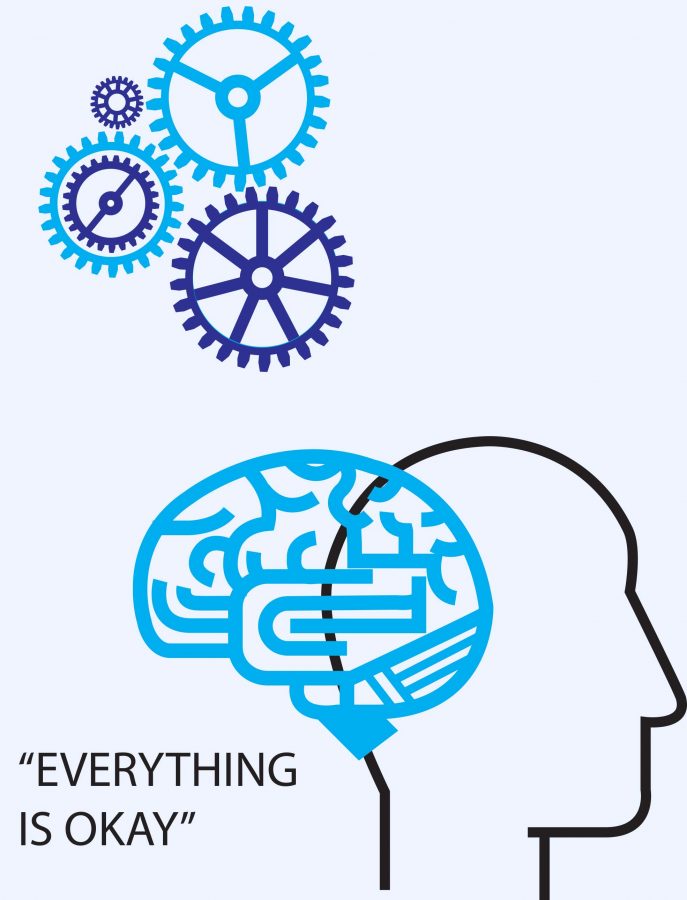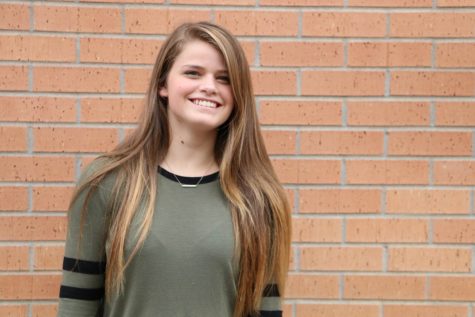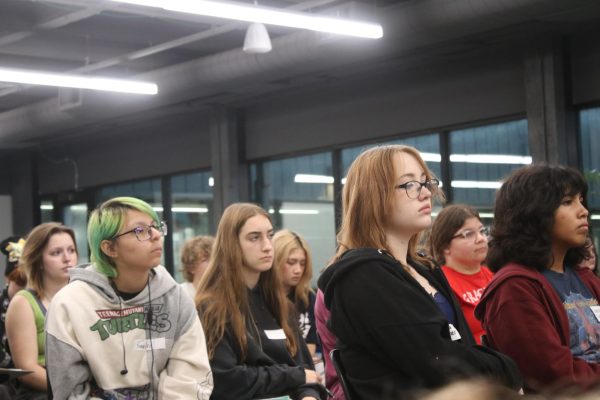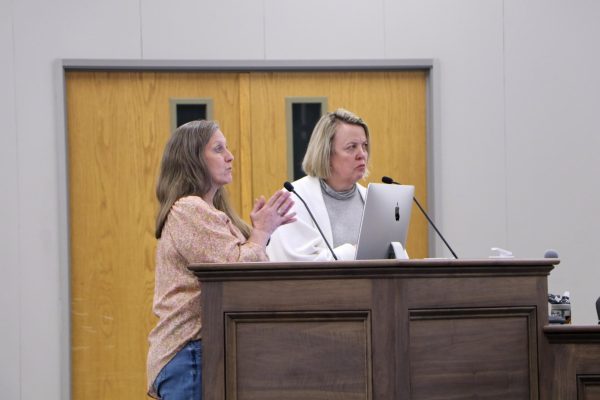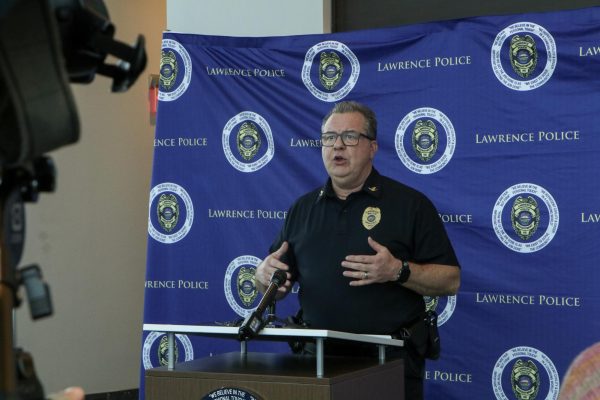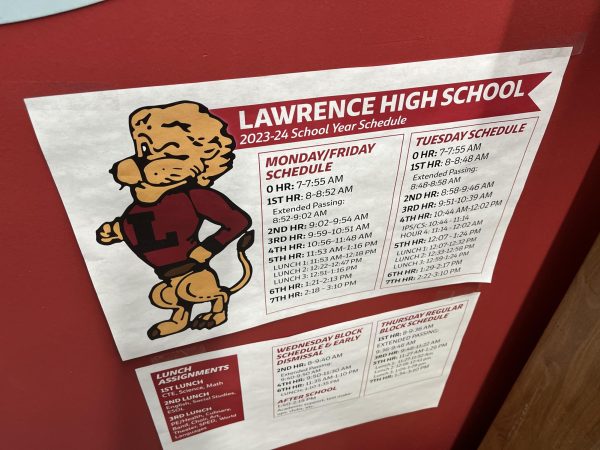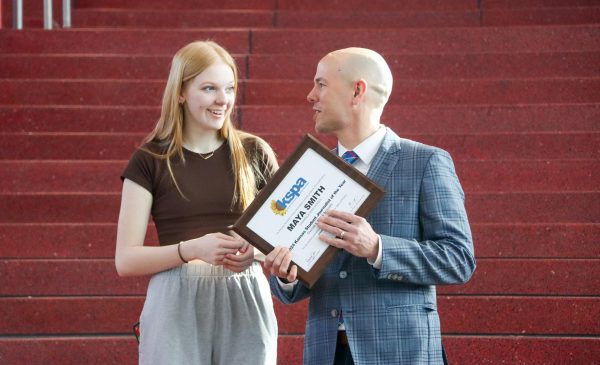Mental Health issues prioritized at LHS
Schools, district put efforts into helping students cope, get help
November 21, 2016
With a world full of immediacy and constant contact, outreach to students with mental health needs has become both easier and harder.
The school’s faculty, along with the district’s mental health team, are equipped to aid students with mental illness. This readiness is not without reason, as the number of students suffering from mental illness has gradually increased over the years.
Every staff member is required to undergo a one hour suicide prevention training.
“All of our staff members in the district have gone through suicide prevention and intervention training,” district mental health facilitator Jose Cornejo said. “So everybody’s been educated [on], ‘What are some of the warning signs when it comes to suicide?’”
According to a 2013 report by the Centers for Disease Control and Prevention (CDC), as many as one in five students exhibits signs of a mental health disorder. Only 20 percent of those with a disorder will receive any form of treatment.
All schools have teachers as well as counselors available to students to aid them in seeking help or to identify changes in behavior that may signal something is out of place. But in a school of nearly 1,600 students, those opportunities may be fewer.
Each counselor at our school has a caseload of nearly 400 students. On average, most counselors have about 500. This makes it more difficult for mental health outreach to happen.
“We know we could use more counselors,” Cornejo said. “The reality of it is, in this budget climate, we’re not necessarily going to get them. But that’s a challenge that all schools are facing across the state.”
Coupled with resources being stretched, the number of students with mental health needs is increasing.
“I think we’ve definitely seen a rise in that, which is why we are trying to be proactive and saying, ‘Hey, we’re here, lots of people, here to help and support students,’ ” counselor Natalie Konkel said.
It’s unlikely that USD 497 will come into funding for expansion of mental health resources without applying for local, state or federal grants, so resources are often focused on those who express needs, Cornejo said.
Needs have always been there, but I think now it’s been brought to our attention because the needs are greater with some of our students.
— Jose Cornejo, District Mental Heath Facilitator
“I think needs have always been there, but I think now it’s been brought to our attention because the needs are greater with some of our students,” he said. “I think there’s a small percent of students that have greater needs than all students, and I think sometimes we need to focus resources and attention on that small percent of students that need support.”
Because the schools can’t treat students with mental illnesses as if they were their patients, students who express or demonstrate need are referred to those who can help them.
“At the school level we don’t diagnose our students,” Cornejo said. “We work with them based on what they come to us with. If they need additional support, based on information we receive from the kids, we’re going to refer them out to Bert Nash or an outside agency that has the staff to work with them.”
In order to reach all students, faculty members have had to gradually adjust the way they teach students to handle mental health issues.
“One area that I’ve seen change, especially at the high school level, is more direct teaching about things that, for example, this year we got in all the health classes, counselors, social workers, to talk about anxiety, depression, help kids recognize some of the signs and also some tools to help deescalate when that cycle begins to build,” assistant principal Mark Preut said.
The mental health staff visited freshman health classes earlier this semester to talk about stress, anxiety, coping strategies and other aspects of mental health.
As students become more comfortable reaching out for help with mental illnesses and more acute stressors, the mental health team has been more aggressive in helping students identify the counselors and WRAP staff who can help them.
“The mental health team went into health classes this semester and we’ll go in again second semester just to make sure that students are aware of who’s on the mental health team, and what supports we can provide to students who are dealing with stress, anxiety, any of those things,” Konkel said.
Some students, however, choose instead to talk to close teachers.
“Individually if you have formed relationships with any teachers, many teachers will let you talk to them or just chill in their rooms,” senior Margot Lockwood said.
Lockwood said that the school’s resources for students suffering with anxiety aren’t obvious enough.
“Even if the school did [make them obvious], I think it would be hard for it to be actually helpful unless a strong relationship is built with each student, which would be difficult to do,” she said. “If anything, more guidance counselors could be a resource for students. Or students could individually pick a teacher advisor their sophomore year.”
Regardless, the current effort seems limited to students like Lockwood.
“I have seen a couple posters in the hallways about mental health and ‘warning signs,’ but those always felt like a joke to me,” she said.
Preut also sees the importance of students having at least one faculty member they can confide in.
“We have an amazing staff,” he said. “Students aren’t going to connect with every teacher they have. My hope is that there’s always that one staff member, that one person they can connect with. Every day we have, it’s called LHS mental health, it’s an email group, so teachers know, ‘Hey, if you’ve got a student you have concerns about, they’re struggling, something’s come up.’ We have probably five to 10 emails a day from teachers saying, ‘Hey does anybody know this kid? They seem to be really struggling today.’ Those students are always followed up with, there’s a meeting with a counselor or social worker, somebody’s going to make contact with that student that day.”
Regardless, the mental health team is prepared to aid students who come to them for help.
“There’s a lot of caring adults in this building who are going to do what they can to help kids be successful,” Cornejo said. “It’s just communicating that someone’s here to help if you’re willing to ask.”



